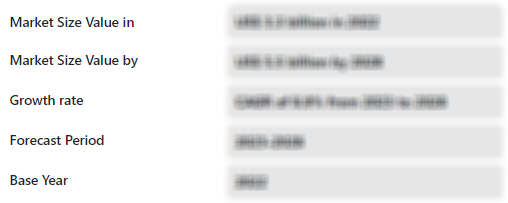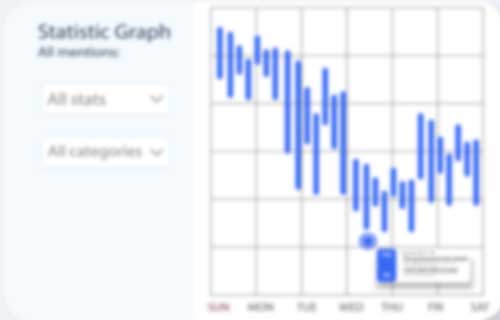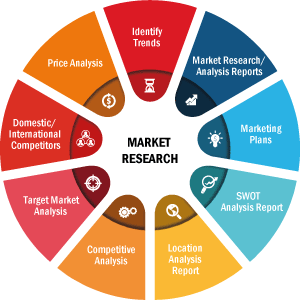$4450
$4005
The Warehousing and Distribution Logistics Market is expected to register a CAGR of 8.4% from 2025 to 2031, with a market size expanding from US$ XX million in 2024 to US$ XX Million by 2031.
The report is segmented by Component (Solution, Service); Industry Vertical (Automotive, Aerospace, Retail, Healthcare, Food and Beverages, Others). The global analysis is further broken-down at regional level and major countries. The Report Offers the Value in USD for the above analysis and segments.
Purpose of the ReportThe report Warehousing and Distribution Logistics Market by The Insight Partners aims to describe the present landscape and future growth, top driving factors, challenges, and opportunities. This will provide insights to various business stakeholders, such as:
- Technology Providers/Manufacturers: To understand the evolving market dynamics and know the potential growth opportunities, enabling them to make informed strategic decisions.
- Investors: To conduct a comprehensive trend analysis regarding the market growth rate, market financial projections, and opportunities that exist across the value chain.
- Regulatory bodies: To regulate policies and police activities in the market with the aim of minimizing abuse, preserving investor trust and confidence, and upholding the integrity and stability of the market.
Warehousing and Distribution Logistics Market Segmentation
Component- Solution
- Service
- Automotive
- Aerospace
- Retail
- Healthcare
- Food and Beverages
- Others
Strategic Insights
Warehousing and Distribution Logistics Market Growth Drivers- Global Expansion of Various Businesses: The driver propelling the growth of the warehousing and distribution logistics market have been the expanded businesses globally and the quick delivery services. The market is supported in its expansion by the greater number of businesses developing new technologies to deliver goods to final consumers. The increasing interdependence of the world's economies and the expansion of international trade are resulting in a growing demand for warehousing and distribution networks that can accommodate cross-border shipments and global supply chains.
- E-Commerce Growth: E-commerce is one of the prime drivers of the warehousing and distribution logistics market that has grown at a tremendous pace. Online retail demands fast, efficient, and flexible networks of distribution that can accommodate rising volumes of orders and provide goods in time to the consumers. E-commerce majors, such as Amazon, Walmart, and Alibaba, are majorly investing in their warehousing and logistics operations, aimed at supporting faster delivery times, primarily for last-mile logistics. Consequently, the demand is even higher for more warehouses and especially in urban locations that can deliver orders faster. Companies have taken to setting up regional distribution centers and fulfillment centers that are closer to main markets of consumers to match their growing need for rapid delivery. This does reduce delivery times and improve customer satisfaction.
- Inventory Optimization and Demand Forecasting: Effective inventory management is absolutely paramount in today's fast-paced, just-in-time (JIT) environment. The reason lies in the fact that efficient optimization of inventory levels can reduce costs because overstocking or stockout tends to delay distribution in relation to consumer demand. However, AI and machine learning are improving demand forecasting abilities so that companies can make very close predictions. This will help maintain optimal stock levels and improve planning for future needs. The solutions powered by IoT and cloud computing will enable companies to track their stock from one end of the supply chain to another, hence ensuring more efficient storage and handling.
- Regulatory Concerns : Increased environmental regulations and a rise in consumer demand for sustainability are forcing companies to shift toward greener warehousing and logistics practices. Energy-efficient technologies, sustainable packaging, and reducing carbon footprints associated with the activities of distribution are also key.
- Gree Warehousing and Sustainable Distribution: The sustainability considerations behind the design of warehouses increase these days. This may involve energy-efficient lighting, the installation of solar panels, and environmentally friendly materials in general. LEED-certified warehouses are on the rise because companies look forward to achieving their sustainability objectives. Companies are looking into reducing the carbon footprint in the distribution operation by investing in electric or hybrid delivery trucks, optimizing delivery routes in order to minimize fuel consumption, and renewable energy sources within their distribution centers.
- Growth of 3PL Industry: With companies outsourcing their warehousing and distribution functions to concentrate on core operations, there is a growing demand for third-party logistics providers. 3PLs offer flexible and scalable solutions catering to a wide range of industries while providing cost-effective, integrated logistics services. There is a possibility of specialization in 3PL service providers for pharmaceuticals, food and beverage, and automotive industries. The opportunities exist for tailoring solutions according to the industry needs, such as temperature-controlled storage or high-regulation compliance. Advanced technologies, such as AI, IoT, and blockchain, can be integrated into logistics operations to promote transparency, efficiency, and effective customer service.
- Expanding Warehouse Capacity and Infrastructure: Growing demand for new warehouses is in sight as e-commerce and international trade boom with unprecedented pace in significant markets including North America, Europe, and Asia-Pacific. In response to the rising demand for fast and efficient distribution, companies have an opportunity to expand warehouse capacity and infrastructure. What real estate developers and logistics companies could seize upon is rising demand for customized warehouses according to e-commerce businesses. Thus, last-mile delivery times are being trimmed by rising demands for urban center proximity locations of warehouses. There is scope for capturing from investment in or development of urban warehouses that can lead to meeting quick delivery demands in growing terms.
Market Report Scope
Key Selling Points
- Comprehensive Coverage: The report comprehensively covers the analysis of products, services, types, and end users of the Warehousing and Distribution Logistics Market, providing a holistic landscape.
- Expert Analysis: The report is compiled based on the in-depth understanding of industry experts and analysts.
- Up-to-date Information: The report assures business relevance due to its coverage of recent information and data trends.
- Customization Options: This report can be customized to cater to specific client requirements and suit the business strategies aptly.
The research report on the Warehousing and Distribution Logistics Market can, therefore, help spearhead the trail of decoding and understanding the industry scenario and growth prospects. Although there can be a few valid concerns, the overall benefits of this report tend to outweigh the disadvantages.

- Sample PDF showcases the content structure and the nature of the information with qualitative and quantitative analysis.
- Request discounts available for Start-Ups & Universities

Have a question?

Naveen
Naveen will walk you through a 15-minute call to present the report’s content and answer all queries if you have any.
 Speak to Analyst
Speak to Analyst
- Sample PDF showcases the content structure and the nature of the information with qualitative and quantitative analysis.
- Request discounts available for Start-Ups & Universities
- Sample PDF showcases the content structure and the nature of the information with qualitative and quantitative analysis.
- Request discounts available for Start-Ups & Universities

Report Coverage
Revenue forecast, Company Analysis, Industry landscape, Growth factors, and Trends

Segment Covered
This text is related
to segments covered.

Regional Scope
North America, Europe, Asia Pacific, Middle East & Africa, South & Central America

Country Scope
This text is related
to country scope.
Frequently Asked Questions
Some of the customization options available based on the request are an additional 3-5 company profiles and country-specific analysis of 3-5 countries of your choice. Customizations are to be requested/discussed before making final order confirmation, as our team would review the same and check the feasibility.
The report can be delivered in PDF/PPT format; we can also share excel dataset based on the request.
The leading players operating in the Warehousing and Distribution Logistics Market include C H Robinson Worldwide Inc, Ceva Logistics, DB SCHENKER, DHL International GmbH, FedEx Corporation, Kuehne Nagel International AG, Safexpress Pvt Ltd, United Parcel Service of America Inc, and YUSEN LOGISTICS CO LTD
The Warehousing and Distribution Logistics Market is estimated to witness a CAGR of 8.4% from 2023 to 2031
Changing customer preference is the key future trend of the Warehousing and Distribution Logistics Market
The major factors driving the Warehousing and Distribution Logistics Market are: Advent of Advanced Technology such as Automation, Blockchain, and other
1. Agility
2. Aramex
3. CEVA Logistics
4. Deutsche Post AG
5. 4PL Group
6. Gulf Agency Company Ltd.
7. Integrated National Logistics
8. Kuehne + Nagel International AG
9. Linfox Pty Ltd
10. Yusen Logistics Co., Ltd.
The Insight Partners performs research in 4 major stages: Data Collection & Secondary Research, Primary Research, Data Analysis and Data Triangulation & Final Review.
- Data Collection and Secondary Research:
As a market research and consulting firm operating from a decade, we have published many reports and advised several clients across the globe. First step for any study will start with an assessment of currently available data and insights from existing reports. Further, historical and current market information is collected from Investor Presentations, Annual Reports, SEC Filings, etc., and other information related to company’s performance and market positioning are gathered from Paid Databases (Factiva, Hoovers, and Reuters) and various other publications available in public domain.
Several associations trade associates, technical forums, institutes, societies and organizations are accessed to gain technical as well as market related insights through their publications such as research papers, blogs and press releases related to the studies are referred to get cues about the market. Further, white papers, journals, magazines, and other news articles published in the last 3 years are scrutinized and analyzed to understand the current market trends.
- Primary Research:
The primarily interview analysis comprise of data obtained from industry participants interview and answers to survey questions gathered by in-house primary team.
For primary research, interviews are conducted with industry experts/CEOs/Marketing Managers/Sales Managers/VPs/Subject Matter Experts from both demand and supply side to get a 360-degree view of the market. The primary team conducts several interviews based on the complexity of the markets to understand the various market trends and dynamics which makes research more credible and precise.
A typical research interview fulfils the following functions:
- Provides first-hand information on the market size, market trends, growth trends, competitive landscape, and outlook
- Validates and strengthens in-house secondary research findings
- Develops the analysis team’s expertise and market understanding
Primary research involves email interactions and telephone interviews for each market, category, segment, and sub-segment across geographies. The participants who typically take part in such a process include, but are not limited to:
- Industry participants: VPs, business development managers, market intelligence managers and national sales managers
- Outside experts: Valuation experts, research analysts and key opinion leaders specializing in the electronics and semiconductor industry.
Below is the breakup of our primary respondents by company, designation, and region:

Once we receive the confirmation from primary research sources or primary respondents, we finalize the base year market estimation and forecast the data as per the macroeconomic and microeconomic factors assessed during data collection.
- Data Analysis:
Once data is validated through both secondary as well as primary respondents, we finalize the market estimations by hypothesis formulation and factor analysis at regional and country level.
- 3.1 Macro-Economic Factor Analysis:
We analyse macroeconomic indicators such the gross domestic product (GDP), increase in the demand for goods and services across industries, technological advancement, regional economic growth, governmental policies, the influence of COVID-19, PEST analysis, and other aspects. This analysis aids in setting benchmarks for various nations/regions and approximating market splits. Additionally, the general trend of the aforementioned components aid in determining the market's development possibilities.
- 3.2 Country Level Data:
Various factors that are especially aligned to the country are taken into account to determine the market size for a certain area and country, including the presence of vendors, such as headquarters and offices, the country's GDP, demand patterns, and industry growth. To comprehend the market dynamics for the nation, a number of growth variables, inhibitors, application areas, and current market trends are researched. The aforementioned elements aid in determining the country's overall market's growth potential.
- 3.3 Company Profile:
The “Table of Contents” is formulated by listing and analyzing more than 25 - 30 companies operating in the market ecosystem across geographies. However, we profile only 10 companies as a standard practice in our syndicate reports. These 10 companies comprise leading, emerging, and regional players. Nonetheless, our analysis is not restricted to the 10 listed companies, we also analyze other companies present in the market to develop a holistic view and understand the prevailing trends. The “Company Profiles” section in the report covers key facts, business description, products & services, financial information, SWOT analysis, and key developments. The financial information presented is extracted from the annual reports and official documents of the publicly listed companies. Upon collecting the information for the sections of respective companies, we verify them via various primary sources and then compile the data in respective company profiles. The company level information helps us in deriving the base number as well as in forecasting the market size.
- 3.4 Developing Base Number:
Aggregation of sales statistics (2020-2022) and macro-economic factor, and other secondary and primary research insights are utilized to arrive at base number and related market shares for 2022. The data gaps are identified in this step and relevant market data is analyzed, collected from paid primary interviews or databases. On finalizing the base year market size, forecasts are developed on the basis of macro-economic, industry and market growth factors and company level analysis.
- Data Triangulation and Final Review:
The market findings and base year market size calculations are validated from supply as well as demand side. Demand side validations are based on macro-economic factor analysis and benchmarks for respective regions and countries. In case of supply side validations, revenues of major companies are estimated (in case not available) based on industry benchmark, approximate number of employees, product portfolio, and primary interviews revenues are gathered. Further revenue from target product/service segment is assessed to avoid overshooting of market statistics. In case of heavy deviations between supply and demand side values, all thes steps are repeated to achieve synchronization.
We follow an iterative model, wherein we share our research findings with Subject Matter Experts (SME’s) and Key Opinion Leaders (KOLs) until consensus view of the market is not formulated – this model negates any drastic deviation in the opinions of experts. Only validated and universally acceptable research findings are quoted in our reports.
We have important check points that we use to validate our research findings – which we call – data triangulation, where we validate the information, we generate from secondary sources with primary interviews and then we re-validate with our internal data bases and Subject matter experts. This comprehensive model enables us to deliver high quality, reliable data in shortest possible time.
Trends and growth analysis reports related to Warehousing and Distribution Logistics Market

Apr 2024
Heavy Commercial Vehicle Air Brake Systems Market
Size and Forecast (2021 - 2031), Global and Regional Share, Trend, and Growth Opportunity Analysis Report Coverage: By Component (Compressor, Reservoir, Foot Valve, Brake Lining and Drum or Rotors, Brake Shoes, and Others), Type (Air Disc Brake and Air Drum Brake), Technology (Conventional Air Brake System, Electronically Controlled Air Braking System, and Antilock Braking System), Distribution Channel (OEMs and Aftermarket), Vehicle Type (Bus, Truck, Construction Equipment, and Tractor), and Geography

Apr 2024
Heavy Commercial Vehicle Clutch Market
Size and Forecast (2021 - 2031), Global and Regional Share, Trend, and Growth Opportunity Analysis Report Coverage: By Distribution Channel (OEM and Aftermarket), Product (Single Plate Clutches, Multi-Plate Clutches, Diaphragm Spring Clutches, Centrifugal Clutches, and Hydraulic Clutches), Vehicle Type (Bus, Truck, Construction Equipment, and Tractors), and Geography

Apr 2024
Electric Vehicle Heat Pump Systems Market
Size and Forecast (2021 - 2031), Global and Regional Share, Trend, and Growth Opportunity Analysis Report Coverage: By Propulsion Type (BEV, HEV, PHEV), Component (Evaporator, Condenser, Compressors, Others), Vehicle Type (Passenger Vehicle, Commercial Vehicle), and Geography

Apr 2024
Hydrogen Fuel Cell Train Market
Size and Forecast (2020–2030), Global and Regional Share, Trend, and Growth Opportunity Analysis Report Coverage: By Technology (Proton Exchange Membrane Fuel Cell, Phosphoric Acid Fuel Cell, and Others), Component (Hydrogen Fuel Cell Pack, Batteries, Electric Traction Motors, and Others), Rail Type (Passenger Rail, Commuter Rail, Light Rail, Trams, Freight, and Others) and Geography

Apr 2024
Automotive Seat Market
Size and Forecast (2020–2030), Global and Regional Share, Trend, and Growth Opportunity Analysis Report Coverage: By Technology (Heated, Heated-Ventilated, Ventilated, With Massage Functions, and Others), Adjustment Type (Electrically Adjusted and Manual), Vehicle Type (Passenger Vehicle, Light Commercial Vehicle, and Heavy Commercial Vehicle), and Seat Type (Front Row, Second Row, and Third Row) and Geography

Apr 2024
Connected Vehicle Market
Size and Forecasts (2020 - 2030), Global and Regional Share, Trends, and Growth Opportunity Analysis By Technology (5G, 4G/LTE, 3G & 2G), Connectivity (Integrated, Tethered, Embedded), Application (Telematics, Infotainment, Driving assistance, Others) and Geography

Apr 2024
Automotive High Voltage Cable Market
Forecast to 2030 - Global Analysis by Vehicle Type [Battery Electric Vehicles (BEV), Plugin Hybrid Electric Vehicles (PHEV), and Plugin Hybrid Vehicles (PHV)], Conductor Type (Copper and Aluminum), and Core Type (Multi Core and Single Core)


